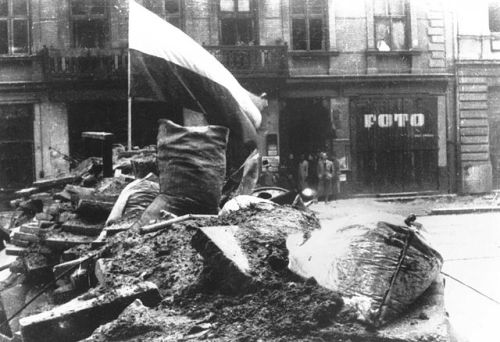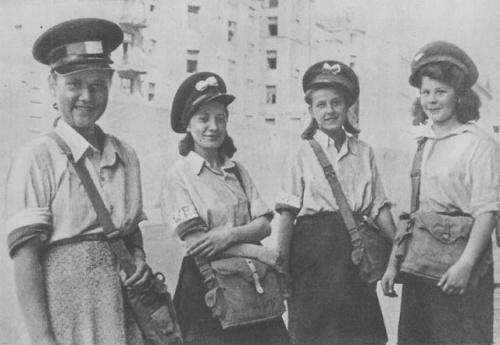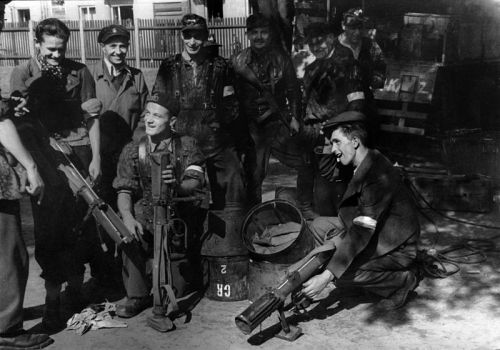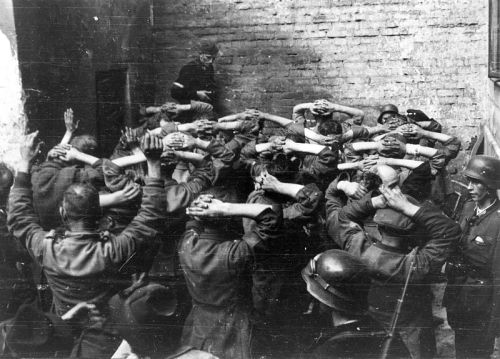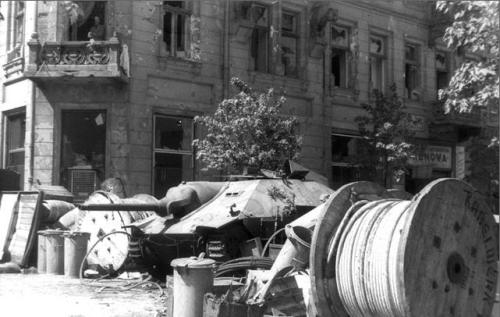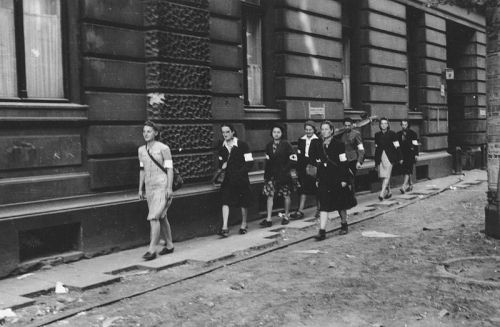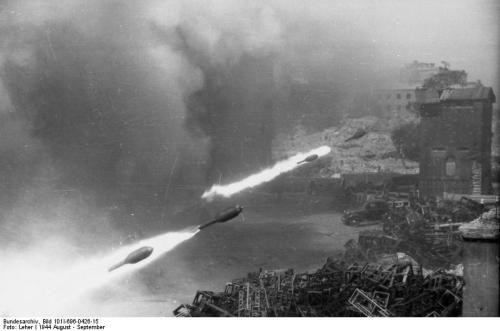lamus-dworski:1944 Warsaw Uprising - the major World War II operation held by the Polish resistance
lamus-dworski:1944 Warsaw Uprising - the major World War II operation held by the Polish resistance Home Army (in Polish: Armia Krajowa, AK), a tragic 63-day struggle to liberate the Polish capital city from the Nazi Germany. The operation was undertaken between 1st August - 2nd October (2 months and 1 day in total), around the time when the Allied troops were breaking through the Normandy defenses. The Uprising was meant to be synchronized with the arrival of the Red Army, but Stalin gave the Soviet troops other instructions - they stopped their march at-hold just at the other bank of the Vistula River, around 20 km from the locations where the main fights took place in Warsaw, cutting the Polish troops from the outside help.The massive losses were counted to around 150,000 - 200,000 deaths of civillians, killed mostly in mass executions [see for example: Wola Massacre]. In comparison, both German and Polish millitary forces counted around 20,000 deaths each. Between 600,000 - 650,000 inhabitants of the city were expelled, of whom around 150,000 sent to Nazi German labour and concentration camps. Around 93% of the city was left in ruins (including the buildings later intended for demolition because of their poor technical condition), what makes the Warsaw Uprising one of the largest battles fought by civillians and ill-equipped combatants. The systematic desctruction of the city was a result of the Nazi Germany planned destruction of Warsaw, which had started already around the beginning of the war.Operated by the Polish resistance army and being remembered as a struggle of the hundreds of thousands inhabitants of the Polish capital city, the Warsaw Uprising was a heroic fight of the Poles. But there were also numerous representatives of other nationalities that had joined the Polish units in the name of the old Polish motto: “for our freedom and yours”. Among them were foreigners living in Warsaw before the war, single soldiers escaped from the German POW camps, refugees from the forced labour in Germany, even a few deserters from the Nazi and Soviet armies. Of the well-documented, the most numerous were Slovak, Hungarian and French volunteers, few Belgian, Dutch, Greek, British and Italian people, one Romanian, one Australian and even one Nigerian [see: August Agboola Browne]. Vast majority of the 348 Jews deported from the Netherlands, Greece, Germany and Hungary, who had been held in the “Gęsiówka” (the Nazi German concentration camp at the Gęsia street in Warsaw) also joined the Home Army after being liberated by the Polish insurgents. Slovaks forming the Platoon 535 were the only foreigners entitled to fight under their own banner and uniforms, as the organization collaborating with the Home Army since 1942, long before the outbreak of the Uprising [x].Outside Poland the 1944 Warsaw Uprising is sometimes mistaken with the Jewish Warsaw Ghetto Uprising which took place a year earlier, in 1943.Informative websites:Warsaw Rising Museum’s website with the extensive photo libraryWarsawUprising.com with detailed FAQ, timeline, stories of the witnesses, resources and more, all available in English.website of the 1944 Warsaw Uprisig Remembrance AssociationAll pictures via Wikimedia Commons.Check also the pictures of the city after the war under the tag Maria Chrząszczowa (Polish photographer who documented the ruins and the process of rebuilding the city). -- source link
Tumblr Blog : lamus-dworski.tumblr.com

